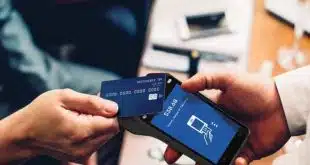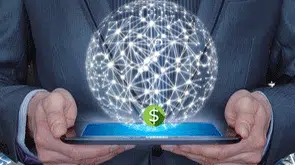Gideon Samid • Gideon@BitMint.com
Payment used to be the end point of a prolonged ritual called haggling. Buyer and seller would drive a hard bargain, to end up with a compromise that kicked off the act of payment. In modern stores, prices are pre-marked and generally non-negotiable, but both buyer and seller still strategize, optimize, and compromise. This modality has been evolving for some time now. But in the near future, it will lose prominence to the emerging modality of algorithmic payment. It works like this:
Buyer and seller set up “payment rules,” and the rules are combined into an algorithm. Then each offers the other a deal, not as part of a human contact, but as a computer-to-computer proposal. If the deal is acceptable to the recipient, it is agreed upon, the money flows, and the other valuable is exchanged in return. If not, then some shared rules determine how the proposals, offers, counter-proposals, and counter-offers are volleyed back and forth to reach an agreement. The rules also specify a state of disappointment, where no deal appears feasible and the algorithmic negotiation stops. This method may at times become quite complex, and even unstable, but its benefits are expected to be breathtaking and stupendous.
The most glaring example of algorithmic payment today is the stock market. Individual stocks are traded as a resolution of buyer and seller algorithms conducting a haggling process that lasts a millisecond or less. Stocks exchange hands back and forth at rates unthinkable in human bargaining.
Our information age allows a remote buyer to spot deals and opportunities around the globe and build purchase algorithms to compete for these deals. For example, investors constantly scan real-estate asking prices and instantly lock in a deal with an earnest payment if their formula determines the asking price is sufficiently attractive.
One should expect similar negotiations for retail payment. As the smart phone establishes itself as the universal retail wallet, it will feature applets that operate on a desired purchase per a preset algorithm, then pay for it and notify the user that the merchandise is scheduled to ship by Friday. Example: You need new batteries, bulbs, razors, etc. You indicate the desired quantity to the applet. The applet scans offers from a list of reliable outlets, checks for coupons and loyalty points in your phone, and eventually orders from the most advantageous merchant—all without taxing your attention in the least.
Algorithmic payment serves as the basis for “refined payment” as opposed to “gross payment.” Namely, you will pay a few cents per page (news magazine) or per minute (movies) instead of a bulk subscription payment where the light users subsidize the heavy users. Refined payment is fair payment: You pay as you go for exactly what you use.
There are aspects of modern life where payment eats up the lion’s share of our attention, for example, health care. Many creative enterprises are busy developing efficient algorithmic payments that would incentivize health-care givers and eliminate the fixed codification of payment categories, since they require undue attention from physicians and nurses.
Algorithmic payment also works in a one-sided mode, as with taxes and fees. Consider the following horror story for motorists (though a bonanza for the tax collector): Future cars will only start if they are fitted with a USB stick loaded with digital cash. As you drive, the car’s computer will compare your speed to the maximum speed on that road. If you exceed that limit, an algorithm will compute the proper fine, which will depend both on your speed and on how long you stay over the limit.
The rising dollar amount will be displayed on your dashboard until you slow down. The money will be sucked out of the USB stick as you drive and will flow in real time into government coffers. No letters in the mail, no collections. Scary stuff, but who knows, it might save lives as motorists speed much less.
To benefit from algorithmic payment, it will be necessary to eliminate the drag of post-transaction settlement. This will favor prepaid payments and digital currency.
Think all of this is decades away? Maybe not. Today’s smart phones are sophisticated enough to house very sophisticated payment algorithms. Unlike hardware, software is spontaneously developed worldwide. Geeks from everywhere equipped with only a laptop can quickly build useful applets. Expect the era of algorithmic payment to dawn sooner than you think.





